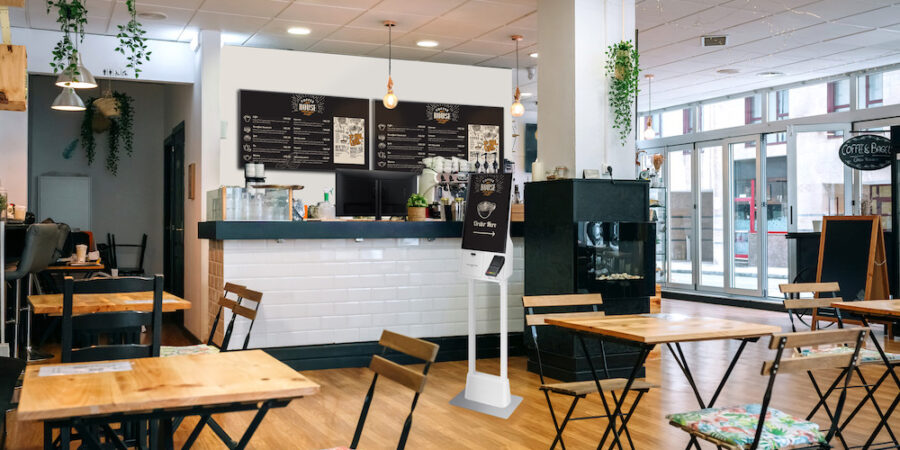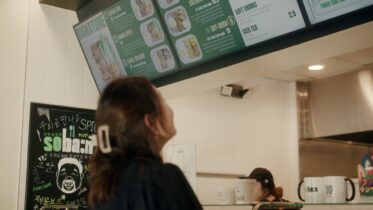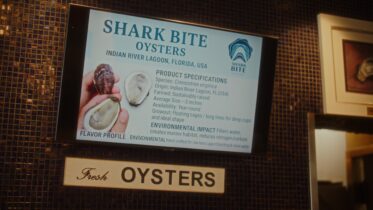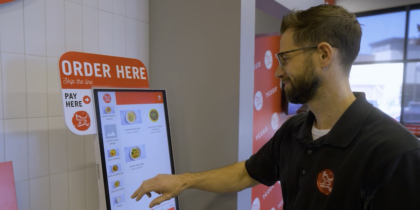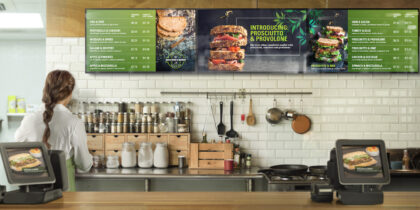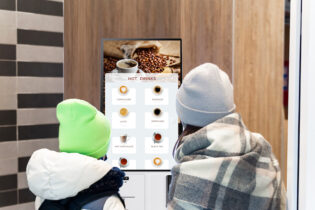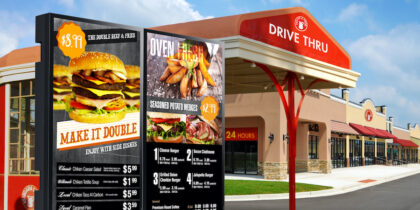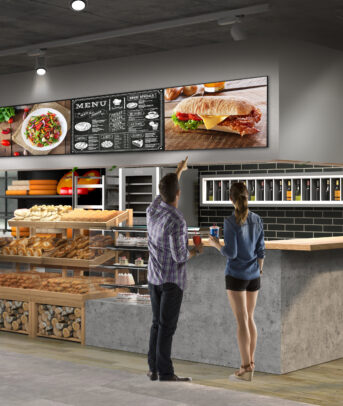Behind the order counters of quick service restaurants (QSRs), digital menus are replacing print for three simple reasons: Time, budget and flexibility.
Updating paper or plastic menus can take days or even weeks. Digital menu displays, on the other hand, give QSRs the ability to make changes in seconds and even automate what appears on screens, allowing a more nimble and responsive approach to marketing. While digital menus have higher upfront costs, they are lower than the aggregate of having new menus printed and installed in the long term, making them just one of many ways going digital streamlines QSR operations. Just installing the hardware is not always enough. To achieve maximum potential, digital signage needs a dynamic content management system (CMS) like Samsung VXT so restaurant operators can put the right content on their screens to match the dominant customer profile and time of day, drive average and incremental sales, and inspire repeat business.
Doing the basics
Good restaurant CMS software makes it easy to do the mission-critical basics of digital menus, such as:
- Scheduling menus by dayparting so certain items appear only during a defined time window
- Adding videos and animations to time- and date-specific promotions on new products and higher-margin impulse items
- Limiting controls and permissions so a QSR chain can schedule and maintain brand messaging continuity at all of its locations while providing local owner-operators some ability to make content updates location-specific
- Adding and removing menu items at a moment’s notice
- Incorporating advertisements by third-party partners
Strengthening the technical foundation
Mission-critical menu board systems need to be always on and accurate. That requires a strong technical foundation that makes the most of the latest computing advances and also works with legacy systems.
Many QSR chains are now opting for digital signage displays that have media players and an operating system built in. The all-in-one design removes the need — and cost — of an external media player, as well as various cables and connectors that often become points of failure and maintenance headaches.
Ideally, a smart display manufacturer should have a partner ecosystem populated by a variety of CMS software partners that support the all-in-one platform and optimization of QSR menus.
While most CMS software can do the basics of posting and updating menus, more sophisticated platforms automate much of the process. If a price changes in the operator’s point-of-sale system, for example, it changes on menu screens. Automated smart scheduling can also trigger prebuilt end-of-day promotions on expiring items.
Smart displays are also designed to work with the menu board systems QSRs already have in place. That means all the screens can be refreshed across a chain — either by using the embedded system-on-chip or the display signal from external media players (like PCs) already in use. Operators can adopt a fully smart system as external players age out and become progressively consolidated onto a single hardware platform.
Providing peace of mind
The QSR-focused technology suite for menu displays by Samsung has seen heavy adoption both at the order counter and in drive-thru lanes, where super-bright ruggedized outdoor screens greet and guide motorists.
Samsung digital displays are all-in-one devices with just one cable, removing the usual back-end tangle. That both speeds up and tidies installs, but more importantly, it minimizes the points of failure that can lead to screens malfunctioning. That means QSR operators have less to worry about and much to gain.
Problem-solving with Samsung VXT
Most commercial display manufacturers either have no in-house CMS software or only offer an entry-level CMS meant for small, budget-constrained business owners, but Samsung has developed, grown and evolved its commercial digital signage software for more than 14 years.
Samsung VXT content management system competes favorably with the top independent CMS software providers. In addition to price point, its advantage to business partners and end users is its emphasis on delivering a cohesive, all-in-one system. A multimodule software platform, Samsung VXT is also a solution in the signage industry to acquire both ISO27001 and ISO27701 certifications, which provide the highest level of security against cyberattacks.
On eligible Samsung smart displays, the included VXT CMS Player software is optimized for the media player’s operating system and the display hardware. Third-party CMS software can be adapted to run on smart displays, but VXT is native to Samsung smart screens, which minimizes the likelihood of technical and compatibility issues.
Samsung VXT also has an opt-in Samsung Remote Management Solution software module that’s highly configurable, designed to maximize uptimes and ensure customers can always view and order from menus and promotion screens. The solution makes it possible to remotely monitor, manage, troubleshoot and remedy hundreds or even thousands of deployed screens from a central desktop at once. Users can even sync VXT with existing management software and enable advanced device health checks and firmware target updates.
Monitoring tasks and costly on-site repair and maintenance calls are minimized through monitoring and hardware control tools that make operators aware of errors, diagnose the issues and provide most fixes remotely. The secure solution also allows operators to change settings and update software without going on-site.
Operators can also get support directly from Samsung through the VXT Maintenance program — a subscription service that provides rapid access to a dedicated IT team. Subscribers can access detailed documentation and a rich knowledge hub with everything from the fundamentals to programming instructions and sample code.
Success on the menu
Digital menus are as fundamental to QSR operations today as grills, fryers and POS terminals — at least if you want to stay on the leading edge of the restaurant industry. Having a powerful restaurant CMS to keep them accurate, refreshed and visually engaging is an essential part of a QSR’s success.
Sign up for a VXT free trial here. And learn more about how QSRs can improve their bottom line with tech.
